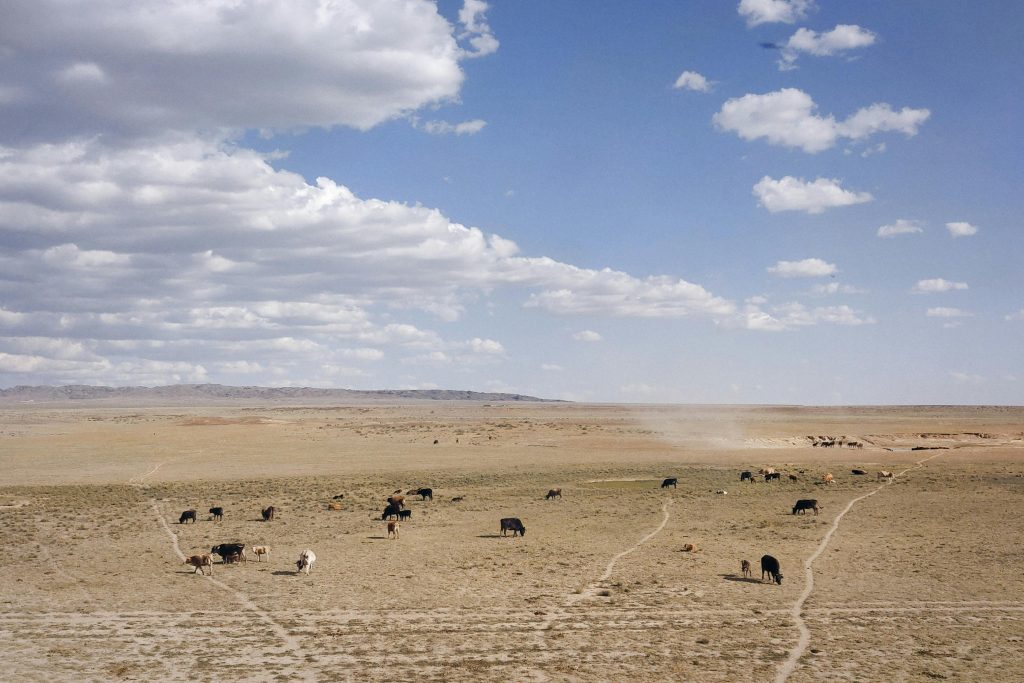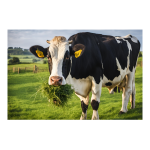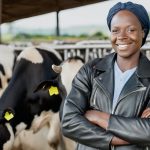Climate change, characterized by long-term shifts in temperatures and weather patterns, poses significant threats to animal health and welfare. This phenomenon not only affects disease patterns, making outbreaks harder to control, but also jeopardizes livelihoods dependent on animals (Intergovernmental Panel on Climate Change [IPCC], 2022). The complex interplay between climate change and animal health manifests in various ways, creating a cascade of challenges that require innovative solutions.

Impacts on Disease Patterns and Distribution
Climate change significantly alters the distribution and abundance of disease vectors and hosts, influencing host-pathogen relationships and facilitating the emergence or re-emergence of infectious diseases in animals (World Organisation for Animal Health [WOAH], 2021). Rising temperatures allow tropical and subtropical diseases to expand into previously cooler regions. For instance, diseases like Rift Valley Fever and Bluetongue, which primarily affect livestock, are now appearing in new areas, posing challenges to animal health management strategies (Food and Agriculture Organization [FAO], 2020).
These shifts in disease patterns are further worsened by changes in rainfall patterns. Irregular precipitation leads to floods and droughts, disrupting habitats of both wild and domesticated animals. During floods, waterborne diseases such as leptospirosis and foot rot in livestock surge due to water contamination (Ali et al., 2020). Conversely, droughts can lead to malnutrition and increased susceptibility to diseases, creating a vicious cycle of health issues.
Ecosystem Disruption and Zoonotic Diseases
The impact of climate change extends beyond direct health effects, causing significant ecosystem disruptions. Deforestation and land-use changes, often increased by climate change, force wildlife and livestock into closer contact, increasing the likelihood of disease transmission. This proximity heightens the risk of zoonotic diseases such as anthrax, brucellosis, and avian influenza spilling over into livestock populations and, eventually, humans (Chang et al., 2023).
This interconnectedness of human, animal, and environmental health underscores the importance of the One Health approach in addressing these challenges. It becomes clear that tackling climate change’s impact on animal health requires a holistic strategy that considers the entire ecosystem.
Physiological Impacts and Antimicrobial Resistance
Climate change directly affects livestock health through increased temperatures and extreme weather events. Heat stress in animals can lead to metabolic disorders, oxidative stress, immune suppression, and decreased reproductive performance. In severe cases, it can result in death, particularly during extreme heat events (Ali et al., 2020).
These physiological impacts not only affect animal welfare but also have significant implications for livestock productivity and food security. Moreover, the stress and increased disease prevalence caused by climate change often lead to increased antimicrobial use in animal populations. This creates a dangerous feedback loop, where climate-driven disease prevalence leads to more antimicrobial use and resistance, making diseases harder to control (Tang et al., 2023).
Cherehani Labs: Pioneering Solutions for Climate-Resilient Animal Health
In response to these multifaceted challenges, Cherehani Labs has developed a comprehensive, innovative approach to mitigate the impact of climate change on animal health. Our solutions are designed to address these problems while providing practical, sustainable interventions.
1. Climate-Resilient Veterinary Labs: We have established a network of solar-powered veterinary labs across affected regions. These labs are equipped with state-of-the-art diagnostic tools that can quickly identify a wide range of diseases. By operating on solar power, we ensure continuous service even in areas with unreliable electricity, making early detection possible in remote and vulnerable communities.
2. Advanced Disease Mapping System: Our system displays the number of disease cases, allowing users to toggle between historical data and spot trends. By combining this data with weather information, our AI-powered system identifies patterns, predicts potential outbreaks, and reveals how specific weather conditions relate to animal diseases.
3. AI-Powered Diagnostics: When farmers send animal samples to our labs, our AI integrated system analyzes them for health indicators and generates customized dietary and hygiene recommendations. This not only helps in early disease detection but also in preventing health issues related to malnutrition.
4. Certification and Verification Program: We’ve implemented a rigorous health certification program for livestock. After testing, we issue digital health certificates for disease-free animals, which farmers can use to access loans and markets. This economic incentive encourages farmers to prioritize animal health and adopt climate-resilient practices.
5. Sustainable Farming Education: We provide comprehensive training programs for farmers on sustainable livestock management practices. These programs cover topics such as water conservation, heat stress management, and biosecurity measures tailored to changing climatic conditions.
6. One Health Collaboration: Recognizing the interconnectedness of human, animal, and environmental health, we’ve established partnerships with public health organizations and environmental agencies. This collaboration ensures a holistic approach to addressing the challenges posed by climate change.
By implementing these innovative solutions, Cherehani Labs is not only addressing the immediate health challenges faced by animals due to climate change but also contributing to long-term sustainability in agriculture and public health. Our approach demonstrates that with the right combination of technology, research, and community engagement, it’s possible to create resilient systems that can withstand the pressures of a changing climate.
Conclusion
The impact of climate change on animal health is multifaceted and far-reaching, affecting disease patterns, ecosystem balance, and antimicrobial resistance. These challenges pose significant risks to animal welfare, food security, and public health. However, as demonstrated by Cherehani Labs’ innovative approaches, there is hope for creating a more resilient and sustainable future for animal health and agriculture.
References
Ali, M. Z., Carlile, G., & Giasuddin, M. (2020). Impact of global climate change on livestock health: Bangladesh perspective. *Open Veterinary Journal*, *10*(2), 178–188. https://doi.org/10.4314/ovj.v10i2.7
Chang, Q., Zhou, H., Khan, N., & Ma, J. (2023). Can Climate Change Increase the Spread of Animal Diseases? Evidence from 278 Villages in China. *Atmosphere*, *14*(10), 1581. https://doi.org/10.3390/atmos14101581
Food and Agriculture Organization. (2020). Climate change: Unpacking the burden on food safety. https://openknowledge.fao.org/server/api/core/bitstreams/da3f8543-c638-4d98-9e23-d5a0db708ff3/content
Intergovernmental Panel on Climate Change. (2022). Climate Change 2022: Impacts, Adaptation and Vulnerability. https://www.ipcc.ch/report/ar6/wg2/
Tang, K. W. K., Millar, B. C., & Moore, J. E. (2023). Antimicrobial resistance (AMR). *British Journal of Biomedical Science*, *80*, 11387.
World Organisation for Animal Health. (2021). Climate change and emerging diseases. https://www.woah.org/en/what-we-do/global-initiatives/climate-change/
World Organisation for Animal Health. (2023). Antimicrobial resistance. https://www.woah.org/en/what-we-do/global-initiatives/antimicrobial-resistance/



